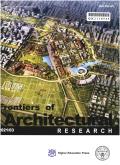Urban vitality transfer: Analysis of 50 factors based on 24-h weekday activity in Nanjing
IF 3.6
1区 艺术学
0 ARCHITECTURE
引用次数: 0
Abstract
Vitality transfer patterns are essential for creating vibrant, sustainable cities, yet their dynamic changes over time remain underexplored. Taking Nanjing as a case study, this study employed 24 h of location-based service data as a time series to explore the vitality transfer pattern within a day from both distribution and aggregation perspectives. Spatial dependence decay patterns were detected using residual clustering relationships, and the LightGBM model was used to explore the relationship between vitality transfer and 50 factors in five categories: transportation, function, economy, morphology, and geography. The results show that the urban vitality distribution has a polycentric agglomeration pattern, which goes through four periods in a day. Vitality transfer is the cyclical process of transformation from one aggregated state to another. The spatial dependence was maximized at 0.75 km2. The magnitude of vitality fluctuation is strongly influenced by factors such as morphology, transportation, and function. Spatial differences in factors combine to drive vitality transfer in distribution and aggregation, with factors such as accessibility and building age diversity influencing distribution, and factors such as accessibility and POI diversity altering aggregation. This study supports the rational design of vibrant urban spaces and promotes effective vitality transfer and sustainable urban development.
城市活力转移:基于南京市24小时工作日活动的50个因素分析
活力转移模式对于创建充满活力、可持续发展的城市至关重要,但其随时间的动态变化仍未得到充分探索。本研究以南京市为例,采用24 h的地理位置服务数据作为时间序列,从分布和聚集两个角度探讨城市一天内的活力转移模式。利用残差聚类关系分析城市活力转移与交通、功能、经济、形态、地理5类50个因子之间的空间依赖性衰减模式。结果表明:城市活力分布呈现多中心集聚格局,在一天内经历4个时段;活力转移是从一种聚合状态向另一种聚合状态转变的循环过程。空间依赖性在0.75 km2处最大。活力波动幅度受形态、运输和功能等因素的强烈影响。因子的空间差异共同驱动活力在分布和聚集上的转移,可达性和建筑年龄多样性等因子影响分布,可达性和POI多样性等因子改变聚集。本研究支持城市活力空间的合理设计,促进活力的有效传递和城市的可持续发展。
本文章由计算机程序翻译,如有差异,请以英文原文为准。
求助全文
约1分钟内获得全文
求助全文
来源期刊

Frontiers of Architectural Research
ARCHITECTURE-
CiteScore
6.20
自引率
2.90%
发文量
430
审稿时长
30 weeks
期刊介绍:
Frontiers of Architectural Research is an international journal that publishes original research papers, review articles, and case studies to promote rapid communication and exchange among scholars, architects, and engineers. This journal introduces and reviews significant and pioneering achievements in the field of architecture research. Subject areas include the primary branches of architecture, such as architectural design and theory, architectural science and technology, urban planning, landscaping architecture, existing building renovation, and architectural heritage conservation. The journal encourages studies based on a rigorous scientific approach and state-of-the-art technology. All published papers reflect original research works and basic theories, models, computing, and design in architecture. High-quality papers addressing the social aspects of architecture are also welcome. This journal is strictly peer-reviewed and accepts only original manuscripts submitted in English.
 求助内容:
求助内容: 应助结果提醒方式:
应助结果提醒方式:


